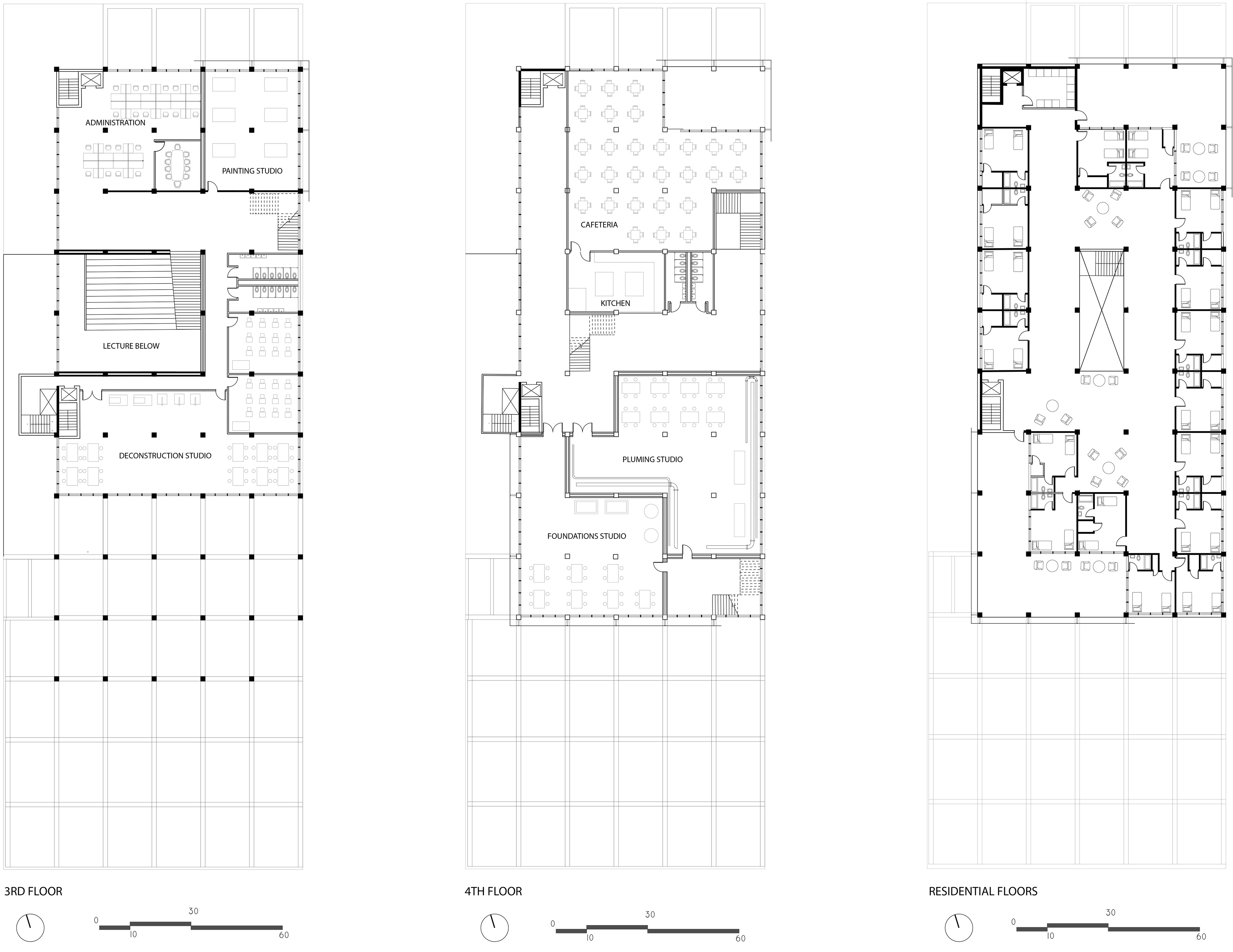According to the Pew of Charitable Trusts, out of 4,411 individuals released from state prison with Philadelphia addresses in 2016, 91% were poverty-stricken areas. These areas are predominantly characterized by homes and stores that are dilapidated and, in some cases, unsuitable for human occupation. Therefore, a person who has been charged of a crime in Philadelphia is most likely to come from an unstable home environment. To rehabilitate this demographic, it is essential to provide a model stable environment and provide a means of stress relief. This is done by the joining charged persons with one another to work together in a deconstruction lab where residents/students take apart building elements to provide raw materials for reuse. This teaches them joinery and gives them the primary skills for construction education. The program then reintegrates by teaching construction skills through studios throughout the building such as carpentry, plumbing, mechanical and electrical labs. Once these foundations are learned, the charged persons are joined with Philadelphia organizations that are dedicated to the restoration and provision of stable environments for communities in need. Upon graduation the charged persons will have the skills and experience to obtain a job, maintain their own living environment and contribute to the physical infrastructure of their local community.
The architecture of the building relies on the concept of joinery, which charged persons are taught in construction practices while also being “re-joined” into society. This is realized through the organization of program and the use of heavy timber construction where joinery methods are exposed. The building becomes an example, where charged persons observe the building in which they habituate and put their observations into practice.








